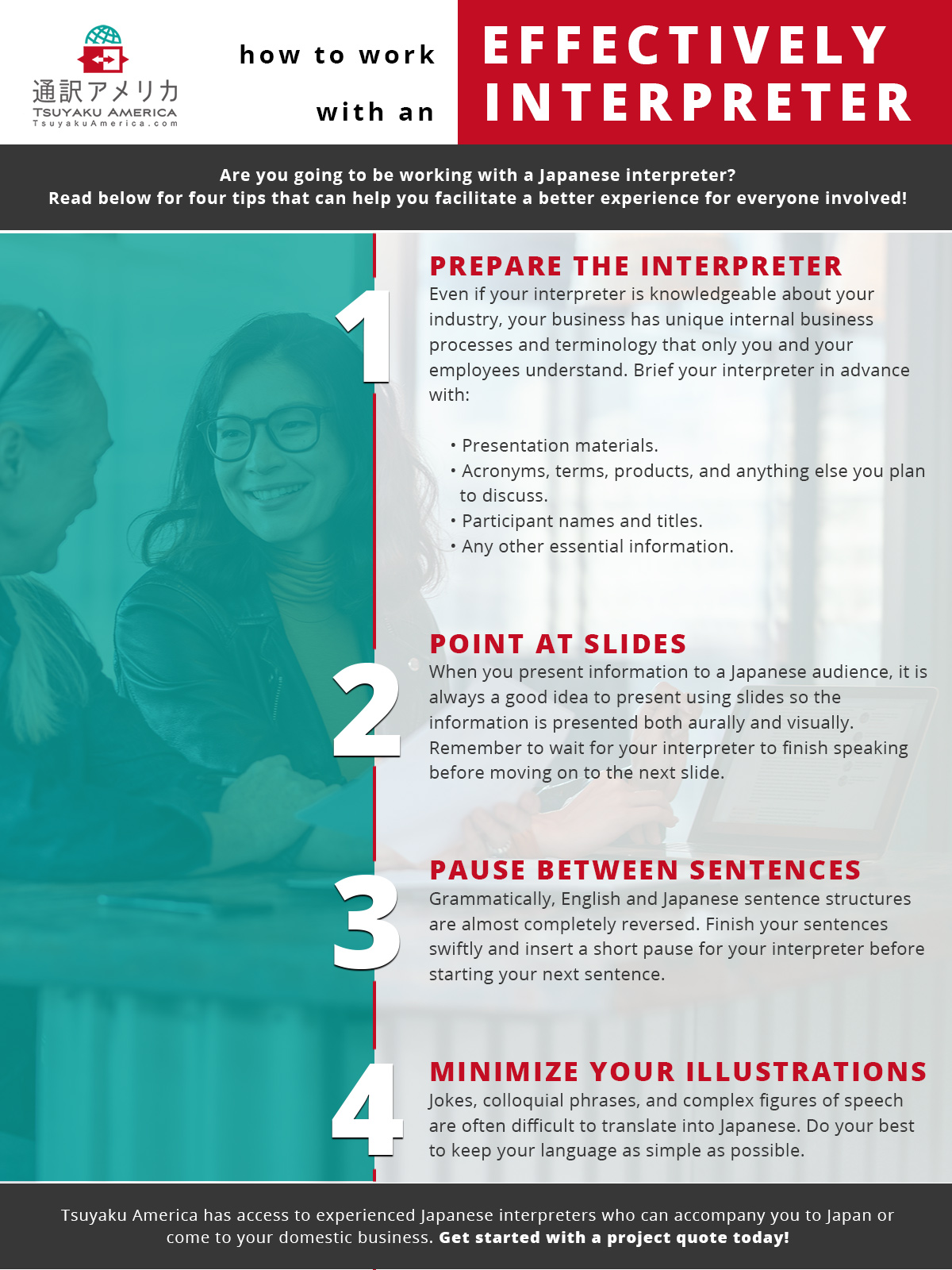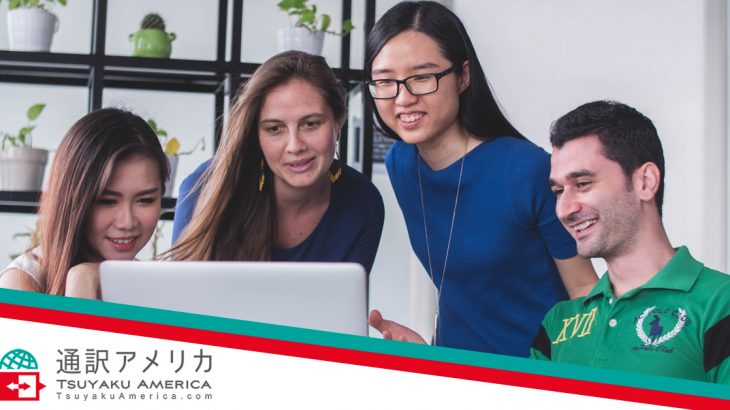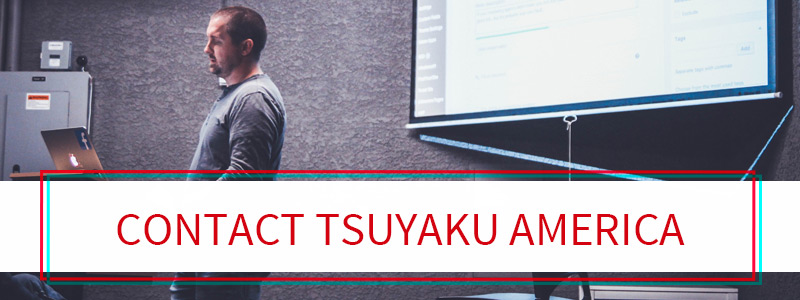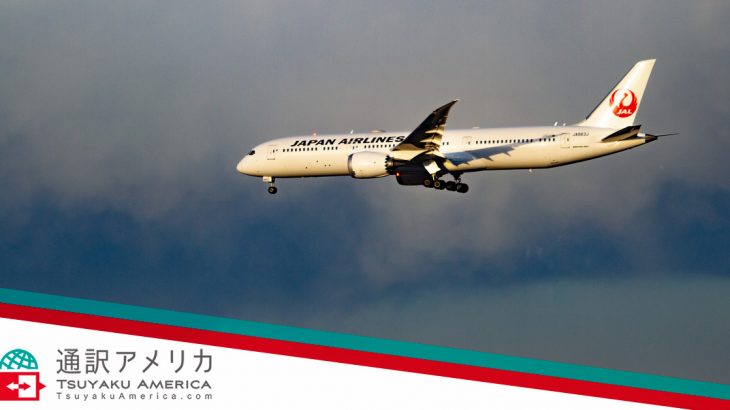At Tsuyaku America, we know that many of our clients have little to no experience working with interpreters. As part of our ongoing commitment to providing you with helpful resources and tips, today’s post features an in-depth guide that will help you work effectively with a Japanese interpreter.
When you’ve finished reading today’s entry, be sure to get in touch with Tsuyaku America to learn more about how we can help you find a professional interpreter. We have access to a wide range of Japanese interpretation experts, and we can help you find someone to come to your business location, or someone who can travel with you to Japan. Read on to learn more about how to work more effectively with your interpreter once they’ve been hired!

Tips for Working With an Interpreter
Prep the Interpreter
Ideally, when selecting an interpreter, you will find someone who is very knowledgeable about your industry and technology. However, given the wide array of industries and technologies that have a need for interpreters, more often than not, you will not be able to find a perfect match. Even if the interpreter is fairly knowledgeable about your industry and technology, all businesses have their unique internal business processes and terminology that only their employees understand: acronyms, abbreviations, department or location names, project code names, and more!
Preparing the interpreter with documents and websites such as the following will make it much easier for them to follow your discussion and deliver quality, more efficient service:
- Agenda, list of participants, and respective party titles.

- Presentation slides that you will be using at the meeting.
- Relevant pages on your website and the other party’s website that describe the business, technology, products, services, and anything else that will be discussed.
- A list of acronyms and other unique terminology that is likely to be used in the discussion. (We understand you may not have a list of such terms, so if this is not available in advance, try to avoid or explain uncommon terminology as it comes up in the discussion.)
- Organization or business location charts that show the different parties involved in the business transactions, their respective roles and relationships, and anything else that could be relevant during your meeting.
While receiving information in advance can be helpful, sending us an entire collection of product maintenance manuals to study is not going to work. There is a limit to the amount of time the interpreter can spend on advance preparation, so please try to send only the essentials.
In addition to sending us documents in advance, it can also be very helpful to have a brief prep meeting just before the actual meeting with your guests. The objective of such a prep meeting is to give the interpreter some context on the meeting:
- Your relationship with the guest: Are they a potential customer, new customer, existing customer, vendor, partner, or investor? Knowing this information can help your interpreter gauge how to best address the other party.
- The purpose or objective of your meeting: Business development? Price negotiation? Problem resolution?
- Expectations: What do you hope to accomplish and how do you expect the other party to react? Do you anticipate any difficulties? What are the key issues you’ll be discussing? How do you plan to address them?
- Knowledge: What do you know about the personalities of the other participants? Who, if anyone, should the interpreter primarily address?
- Sensitivity: Is there anything the interpreter should be careful when discussing? Is there sensitive information that should not be disclosed?
As you can see from the list above, your interpreter is a partner who will play an important role in ensuring that your meeting goes smoothly and according to plan. Help them help you!
“Show and Tell” by Pointing at the Slides as You Speak
When you present information to your Japanese guests, it is always a good idea to also show the information on slides so the information is presented both aurally and visually. The slides should show important keywords and numbers, and you should point to these keywords and numbers on the slides as you talk through them. If you are working with a consecutive interpreter, remember to wait for the interpreter to finish interpreting before moving to the next slide. Not only does this ensure that the interpreter conveys all information accurately, but it also makes it much easier for your Japanese audience to visually follow the storyline on the slides as they listen. Remember, your guests are reading slides in English and trying to match it up with the Japanese audio from the interpreter. This is not easy. By pointing at the bullet you are discussing, it is much easier for them to synchronize the audio and the visual information.
Also, if you can share a hard copy of the slides, the audience can minimize note taking and focus on the visual and audio information, making your meeting significantly more personal and informative.
Pause Between Sentences 
Grammatically, English and Japanese sentence structures are almost completely reversed. The English sentence “We agree with your proposal” becomes “We; your proposal; agree” in Japanese. The translation is performed sentence-by-sentence, not word-by-word. Inside the interpreter’s head, every word is translated into the new language and also resequenced to form a sentence that makes grammatical sense in the new language. This means, technically, the interpreter cannot start the Japanese sentence until the English sentence is finished.
This is why speakers who pause mid-sentence, either to wait for the interpreter to catch up or to carefully choose their next words, can create difficult challenges for interpreters. It is best to finish each sentence swiftly and insert a short pause for the interpreter before starting your next sentence.
Minimize Your Illustrations
As we discussed in a previous post, you should always be cautious of using idioms, figures of speech, and culturally specific language when working with a Japanese interpreter. Jokes, colloquial phrases, and other, more complex figures of speech are often difficult to translate into Japanese, and you don’t want your interpreter to be caught off guard during your meeting. Try to keep your language as simple as you can, and if you do need to use a colloquialism or reference something specific to American culture, try to give your interpreter advance notice so that they can prepare accordingly.
Find a Japanese Interpreter Today!
We hope that today’s entry will help you make the most of your investment in a Japanese interpreter. Bookmark our blog and check back frequently, as we’ll continue to provide you with even more helpful resources in the coming weeks and months.
Are you ready to find an interpreter? Use this form to get started, and don’t hesitate to contact Tsuyaku America if you have any additional questions!
We look forward to working with you.
[gravityform id=”1″ title=”false” description=”false”]


















